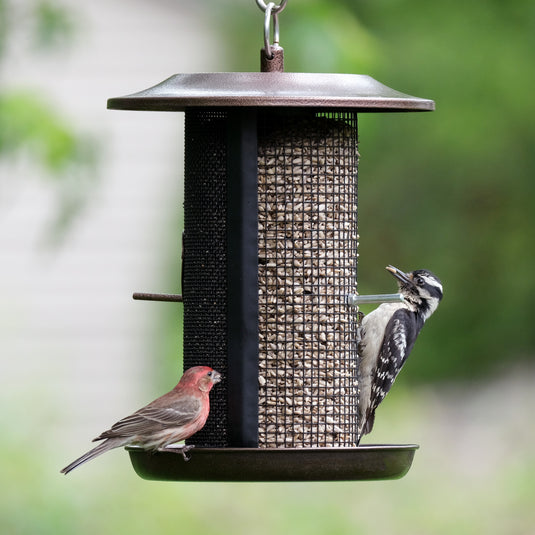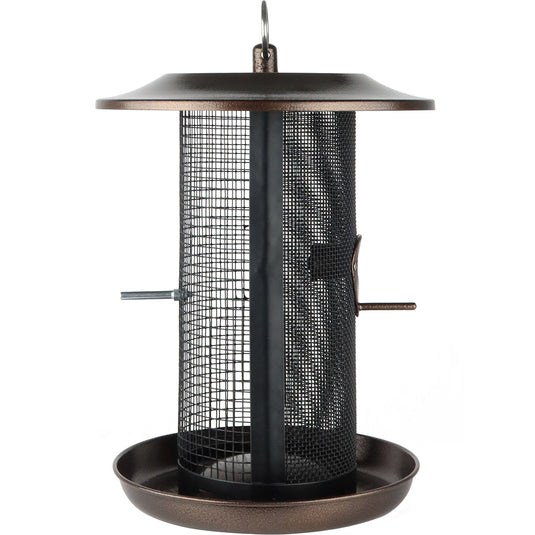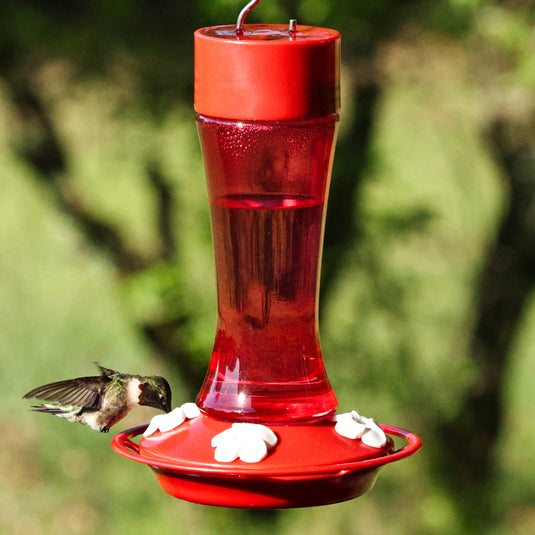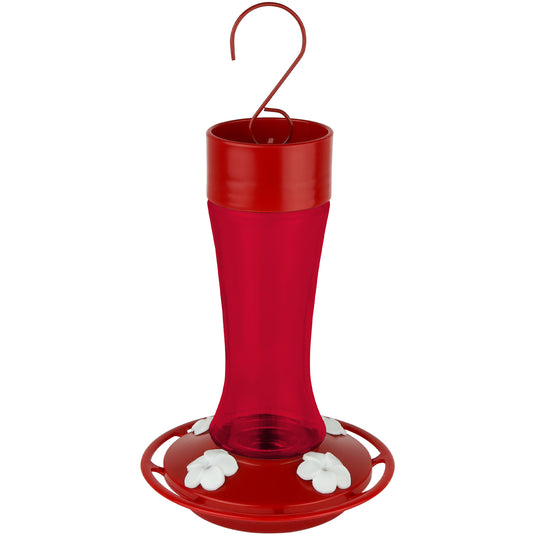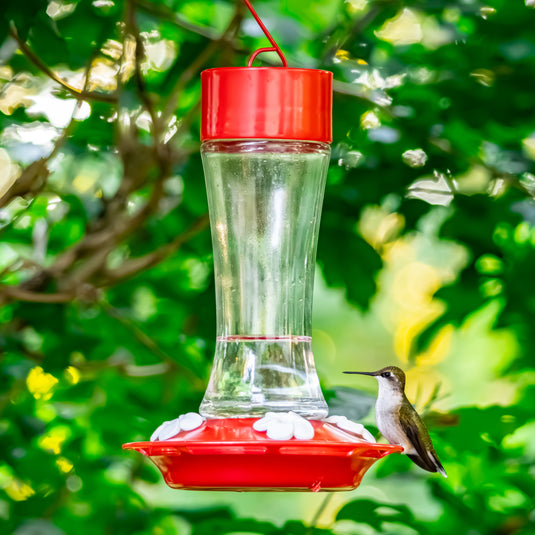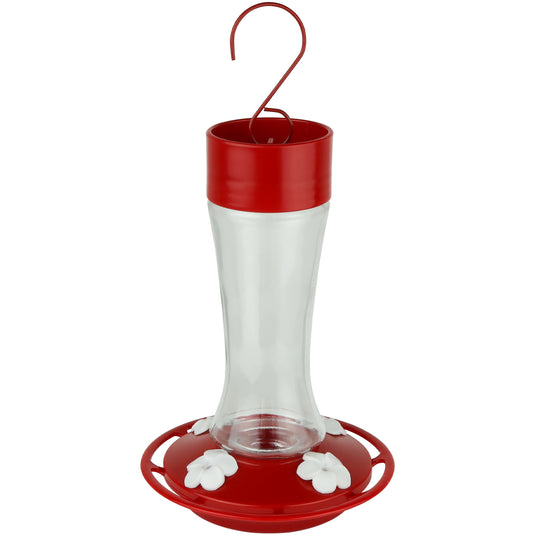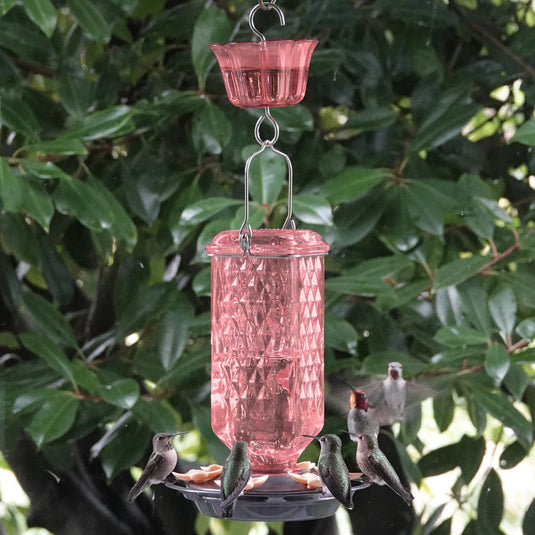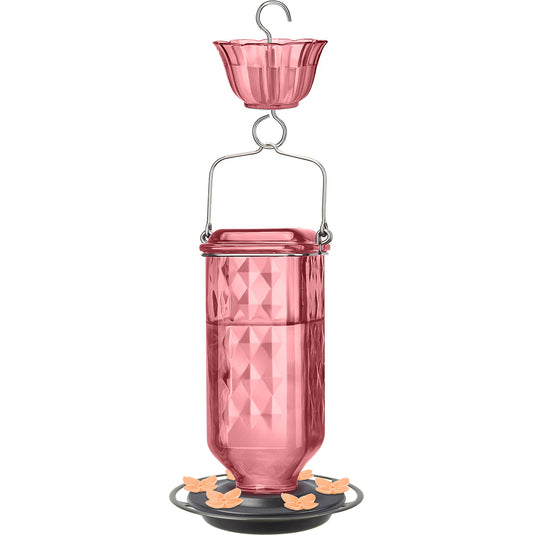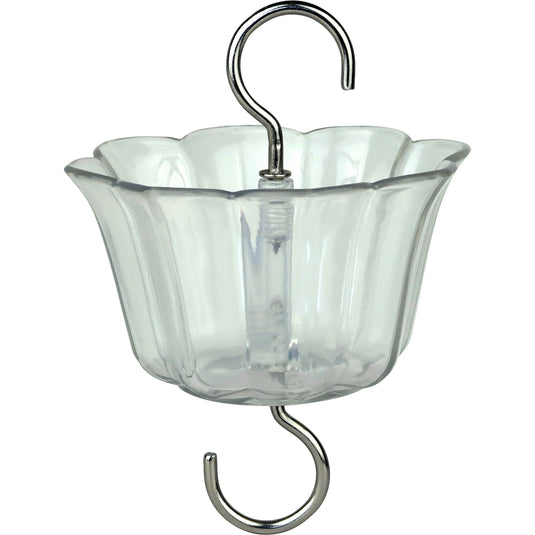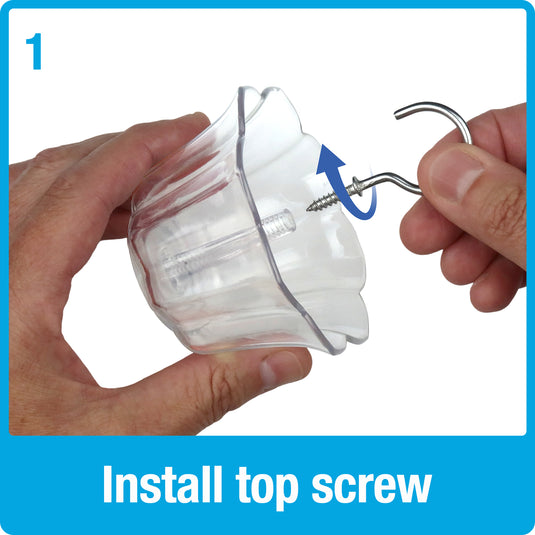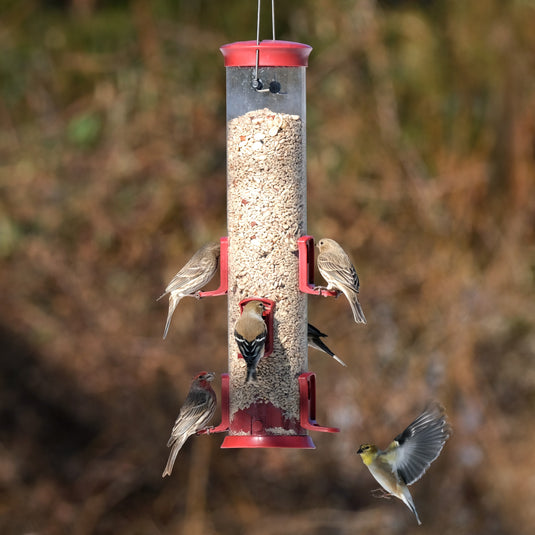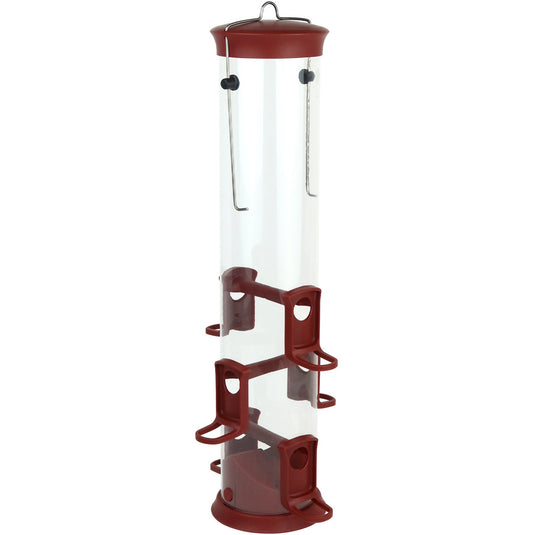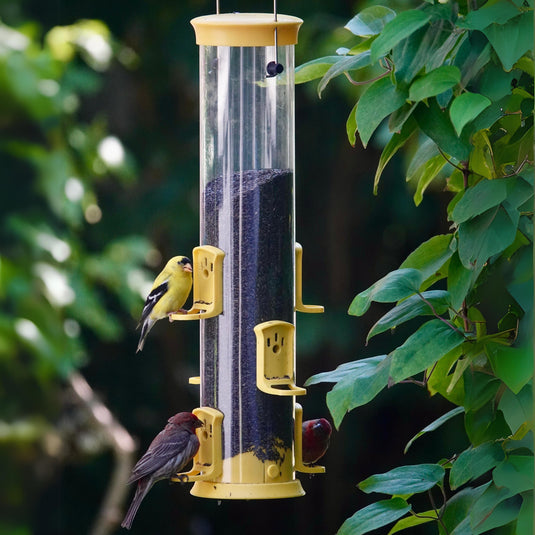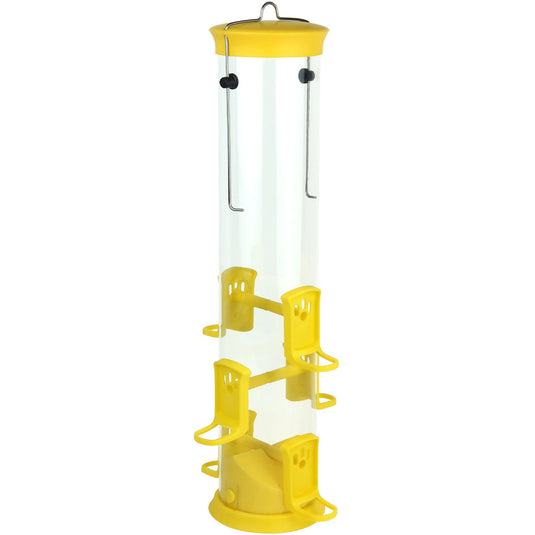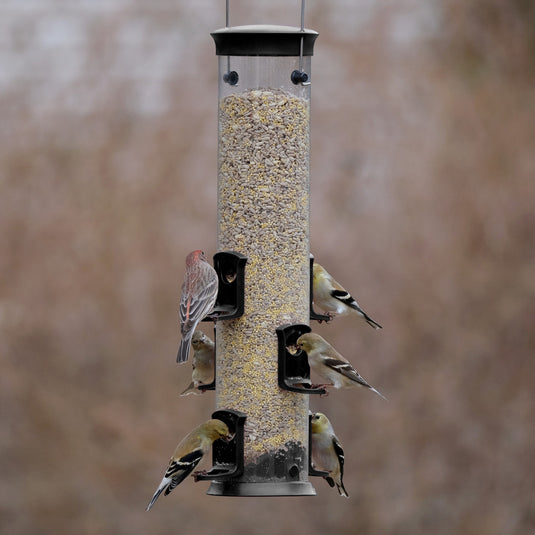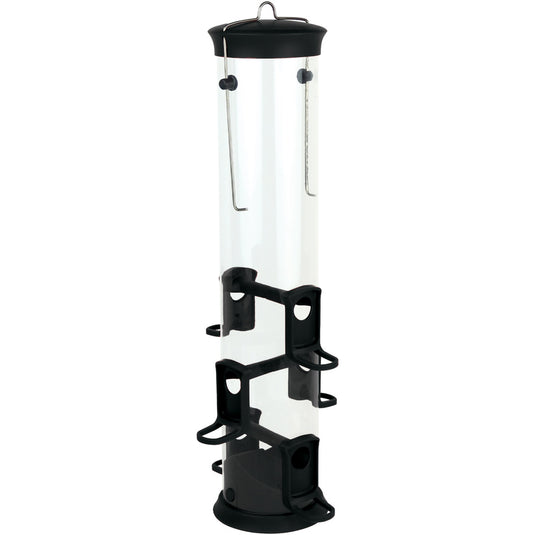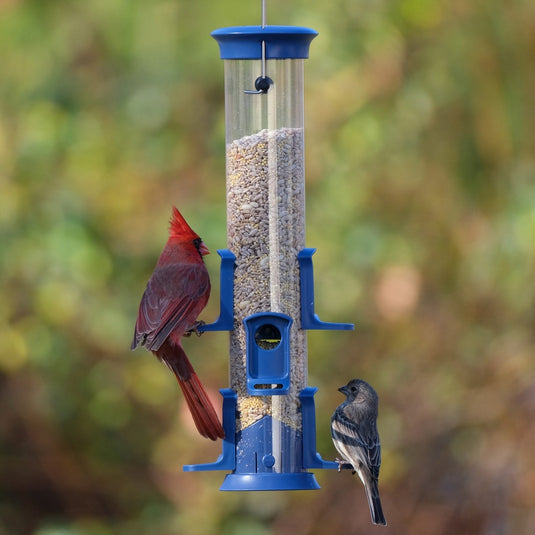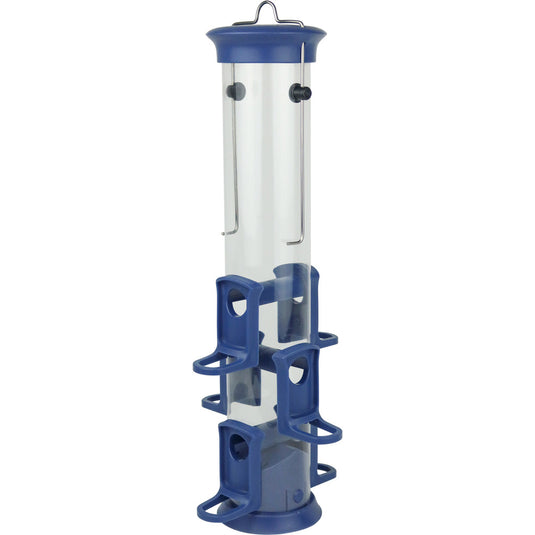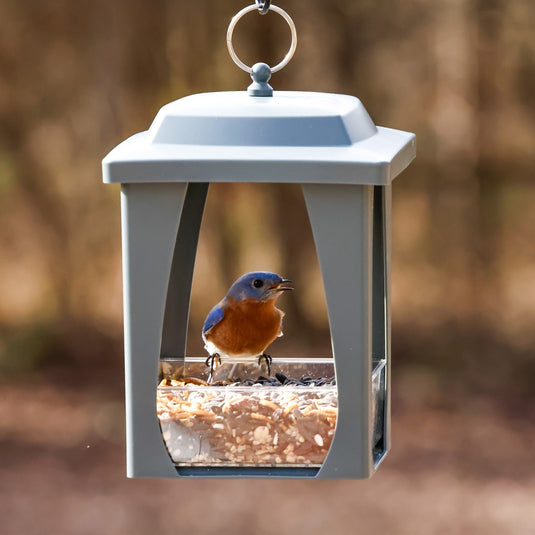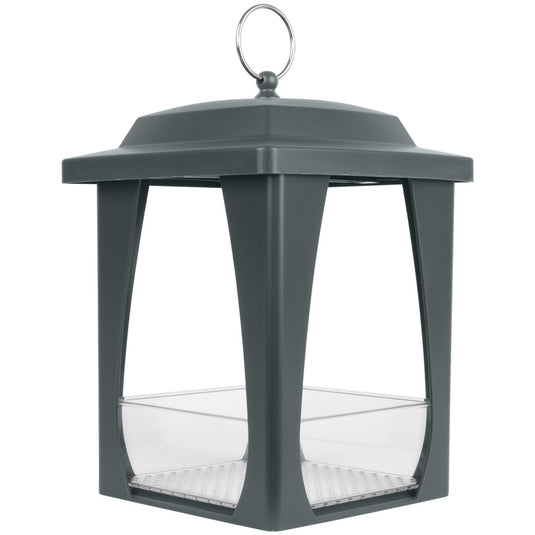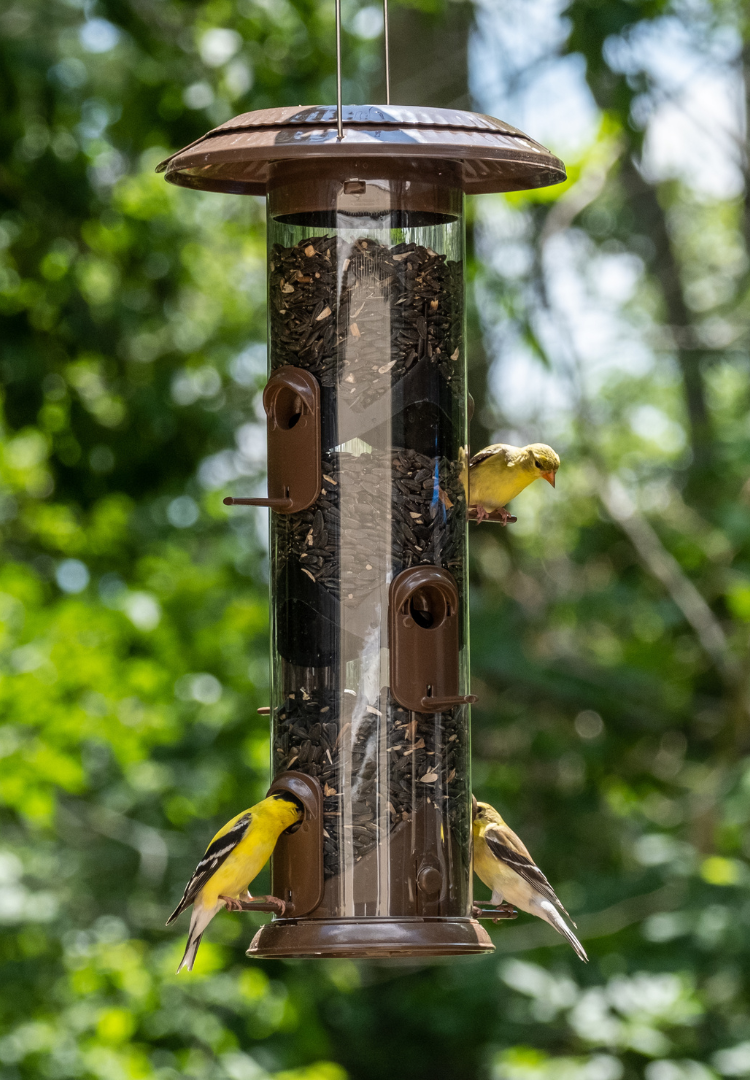Identifying Purple Finches:
These small stocky-bodied finches have large powerful conical beaks, shorter wings, and a seemingly short notched tail. Roughly 5 to 6 inches in length, these streaky grayish-brown finches are dimorphous, meaning male and female birds have different coloration. Male Purple Finches are a delicate dusky pink-red on the head and breast, mixing with brown on the back and cloudy white on the belly. Female Purple Finches have no pink or red coloration anywhere on the body. Instead, they are coarsely streaked on their undersides and have strong facial markings including a whitish eye band and a chunkier dark brown line down the side of the throat. Coloring can vary from bird to bird as the red of the male's coloring comes from pigments contained in its food during molt. This means the more pigment in the food, the more vibrant the male's coloration.
Top perch: breeding female Purple Finch. Bottom perch: breeding male Purple Finch. Feeder shown: Farmhouse Deluxe Easy Clean Feeder
Attracting Purple Finches to Your Feeder:
Purple Finches eat mainly tree seeds such as those from coniferous trees and elms, tulip poplars, and maples, among others. They also eat soft buds, nectar (consumed by biting the bases off flowers versus inserting their beak into the flower like hummingbirds), and a wide variety of berries and fruit, including blackberries, honeysuckle, crabapples, juniper berries, cherries, and apricots. In winter Purple Finches can be seen eating seeds of weeds like dandelions, ragweed, and cocklebur. Including some or all of these plants in your landscaping when possible can help to attract these birds to your yard. These birds also eat some insects, including aphids, caterpillars, grasshoppers, and beetles, so try to limit the use of broad-spectrum pesticides when possible to help increase these natural foodsources.
As with most birds, Purple Finches will readily come to feeders filled with black oil sunflower seed. As is typical for finches, these birds are very social and are often found in large groups. To maximize bird viewing, consider placing feeders with a large number of feeding ports like a tall tube feeder, or wide open feeding access like a tray feeder.
Nesting:
Purple Finch nests are often built far out on the limb of a coniferous tree or, in the southern portion of its breeding range, in deciduous trees such as cherries, oaks, and maples. An occasional nest may also be found in shrubs or among vine tangles. Nests are often built under an overhanging branch or structure for additional shelter and can be found as low as 2.5 feet and up to 60 feet off the ground. The female does most if not all of the nest construction using twigs, stick, or even root pieces as a foundation with an inner cup structure lined with softer animal hair and fine grasses. When completed, the nest will be approximately 7 inches wide and 4 inches tall.
A typical clutch size can range from 2-7 eggs. Eggs are approximately 0.7-0.9 inches long, 0.5 inches wide, and are a very pale greenish-blue to white with fine dark speckles. Incubation period is typically around 12 days and hatchlings are ready to fledge after approximately 14 days in the nest.
Distinguishing between a House Finch and Purple Finch:
Although these two finch species are similar in appearance they can be distinguished quite easily in the field. Both male and female house finches sport a more slender body with a longer tail sporting a shallower notch. The male House Finch's bold coloring is more of a red-orange limited to the face and chest area while the male Purple Finch is a rosier, pink-red coloring that extends past the face and down the back. The female House Finch have a more blurred streaking pattern in the brown and tan feathers on their flanks and also a plainer face. In comparison, the female Purple Finch is coarsely streaked below and has a pronounced darker brown line down the side of the throat and a whitish eyebrow.
When identifying between similar species it is also important to note the location and time of year. While these two species do have territory overlap, Purple Finches are typically only found in the United States during non-breeding months with the exception of the Western cost and most northeastern states whereas the House Finch is found throughout most of the United States year-round.

Left: breeding male Purple Finch. Right: breeding male House Finch. Photo courtesy of The Cornell Lab of Ornithology.

Left: female/immature Purple Finch. Right: female/immature House Finch. Photo courtesy of The Cornell Lab of Ornithology.
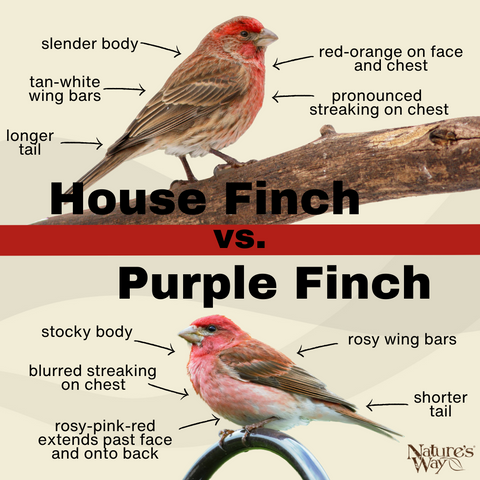
Leave a comment to share with us your Purple Finch stories!



